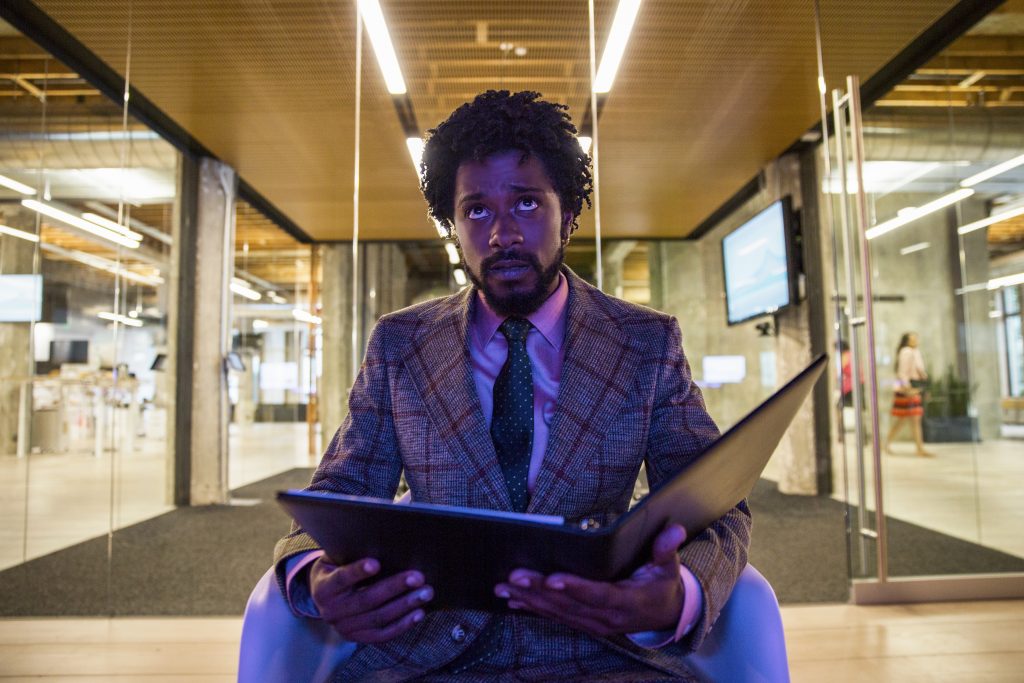
by Ross Trivisonno
For the final assignment of the Best Pictures course in Fall 2019, students had the option to produce either a video essay or write a traditional academic essay. This essay is one of the latter; in it, Ross Trivisonno analyzes the form and themes of Boots Riley’s 2018 film Sorry to Bother You.
Mutant horsemen (like, actually, half-horse/half-man things), and aggressive picketing labor unions, and exploitative crony capitalism, oh my!
So goes the prevailing smorgasbord of characters, caricatures, and themes in Boots Riley’s latest societal critique of a film, Sorry to Bother You. Perhaps ruthless socioeconomic parody is a more apt descriptor, though, seeing as “societal critique” seems all too soft of a genre in categorizing a picture that lunges for status quo capitalism’s jugular so mercilessly and, contrary to its title, unapologetically. Put simply, this more-than-a-little Marxist film is utter madness: a dizzying array of comically archetypal characters, dystopian work environments, and socio-political parody, all the while using anything but traditional, technocratic economic interlocutors in its argument against an unbridled market system – instead relying on the absurdist comedy of it all to persuade audiences, and ultimately deliver one knockout punch of a blow to the ironically capitalist film industry’s unwritten moratorium on anti-capitalist pictures.
Make no mistake about it. Just like Spike Lee, Jordan Peele, Ava Duvernay and other prominent African-American filmmakers of Hollywood present, Riley, no stranger to the fringe, has an agenda; it is an agenda rooted in race, an agenda rooted in class, an agenda rooted in station, corporatism, privilege—and the lack thereof. But unlike many films with agendas, this one doesn’t miss the forest for trees in its quest to imbue the message it so proudly carries. Instead of getting bogged down by the granularity or potential clunkiness of each of its individual themes, Riley’s motion picture stitches them all together almost seamlessly into a cinematic quilt.
Clocking in at a comfy 112 minutes, Sorry to Bother You marries wit with scrappy and whimsical dialogue, led by vibrant performances by Lakeith Stanfield, Armie Hammer, and Tessa Thompson. Those features, along with a meticulously-crafted mise-en-scène, represent key components of Riley’s Bernie Sanders/Elizabeth Warren-esque institutional criticisms. If there is any one word to describe the thematic layering, it is intersectionality. Above all else, intersectionality is the belief in a certain universal interconnectedness, that everything racial, class-based, gender-based, religious, orientation-based, or regarding ethnicity, nationality, station, or creed et al. shares fundamental underpinnings, and are not mutually exclusive, independent matters, but rather deeply interdependent, overlapping systems, inextricably linked to the haves and have-nots of our world. Just as Get Out – one of the most ingeniously-layered pseudo-comedies of all time – lies at the thematically “woke” crossroads of race, mental health awareness, and advocacy, Sorry to Bother You falls at the intersection of an even greater plethora of social themes. We’re clearly dealing with some tremendously thoughtful, conscious material here.
Perhaps most remarkable of all is that Riley manages to communicate his complex message so effectively not in spite of production constraints and an incredibly low budget, but because the big screen has a seemingly endless array of cinematographic devices to choose from, like tools in a toolbox. And Riley employs these techniques bountifully, from some savvy literalization via Kafkaesque mise-en-scènes and unique shot sequences, to audio dubbing and an overall expressionistic visual narrative (with a trope-laden metanarrative as well). Rather than providing a mere synopsis or critical review, I will analyze how the formal techniques listed previously, in no particular order, enable and enhance the socio-economic, racial, and political themes inherent to the film’s narrative and metanarrative successes. To do this, I will carefully breaking down a handful or so of the film’s more significant scenes.
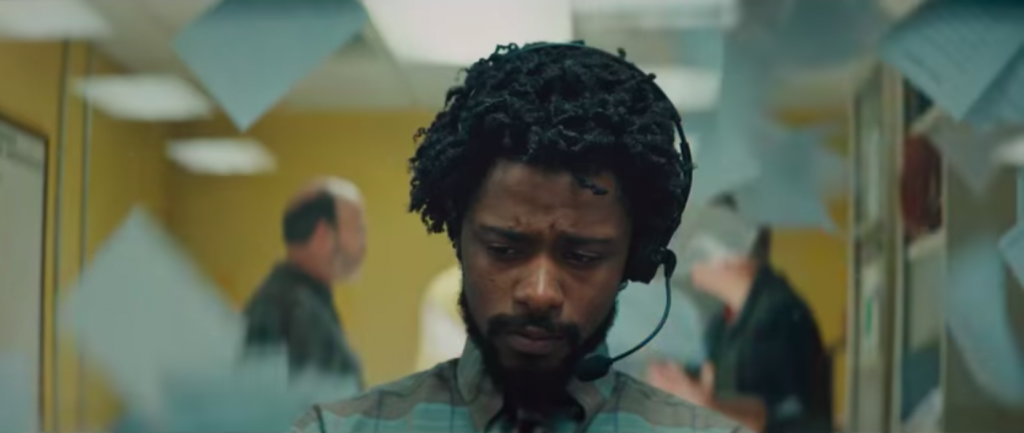
First, let’s start with the mise-en-scène of the opening interview, in which protagonist Cash (ironically and symbolically shortened from Cassius) is applying to work at telemarketing firm RegalView (also purposely-named). Everything we see in-frame is a tacky mess, from the junk-filled desk – topped with an all-too-anachronistic rolodex and boxy desktop computer – to the absurdly cluttered, mostly illegible, bulletin board backdrop of Cash’s medium-close shots, and the corny poster screaming “S.T.T.S.” on the wall. We later learn that this means “stick to the script!” Wall signs of similar short-phrased, autocratic, smarmy positivity are found throughout the workplace. Even the exaggeratedly large, so-called “bootleg” trophy Cash gleefully whips out of his bag, and the employee-of-the-month plaque he desperately hugs, seem cringeworthy, as does the scruffy appearance and foul language of his soon-to-be boss. It all just seems so out of place, while simultaneously also seeming perfectly on-brand for something as lowly regarded in America’s tertiary managerial-service class as a pesky telemarketing firm. The boss says it best; after calling Cash’s bluff and acting superficially angry, he merely laughs it all off in a quick about-face, saying “this is telemarketing, we’re not mapping the fucking human genome here… I’ll hire damn near anyone.” Well, good to know that ethics and qualifications have no place in a short-sighted, profit-first, capitalist society! — or so Riley’s message goes. From the get-go, we can see the first signs of this film’s symbolic parody.
The messy artifice of objects in this scene’s numerous frames signifies not only the fraudulent nature of Cash’s resume and qualifications, but the unabashed nature of all that is to come. The embellished, inflated trophy literalizes Cash’s (and the firm’s) initial embellished truths. Cash lies to get the job and yet his boss doesn’t give a damn because all that matters is the bottom line; the ends justify the means when big dollars are talking. We see even more amplified instances of this as the film progresses. That is the dystopian parallel reality – all too familiar to 2019’s corporatist America – that this film takes place in: what we are soon to know as an Oakland-based, cubicle-riddled front where everything is merely a put-on, a nefarious corporate syndicate, a firm to rival John Grisham’s The Firm.
What makes this cold open truly so unique is the influence of the formal elements on its figurative nature. Without such a carefully crafted mise-en-scène, without the nascent knowledge that this is something of a slimy workplace, would Cash and his boss’s dialogue, their narrative, work so well together – would his lies be glossed over? It’s hard to see this interview happening – or somebody as supposedly unqualified landing any job – in a Wall Street company’s executive board room … or is it? Perhaps this a subtle allegory of the grey-collar—white-collar capitalist line, implying that regardless of one’s organizational station, regardless of the outside reputation of the business, regardless of what side of the train tracks we’re on, irresponsible capitalism is the same in every nook and cranny of American society. It matters not what color collar you wear, or how many digits your paycheck may be, or what side of the Bay you work on (Oakland versus Silicon Valley): corporate capitalism is corrupt and exploitative regardless of context or circumstance, to any and all within its bounds. Period. End of story.
This sequence is loaded with allegory, but unfortunately it’s over before it even begins. Cash scrambles out of the office, and we get an interesting long shot of the room as a backdrop to the larger call center cubicle hall, the office’s warmth contrasted with the coldness and corresponding arduous monotony of the hall. Furthermore, the smugness of this office’s (rather uncouth and unkempt) managerial class is contrasted with the discontented masses of its working class; hot versus cold, the cinematic imagery speaks beautifully. Then the title sequence rolls, whimsical and bold-faced. And we’re done. But yet, this appears to set a thematic tone for the rest of the film, giving us a brief glimpse of the contrasts Riley hopes to strike in the coming two hours.
This is an early and admittedly minor example, though. Not much later on in the film, we get a short glimpse of Cash finally at work, sitting in his cubicle adjacent to an older black man named Langston, played by Danny Glover. (It appears that the vast majority of the call-workers are non-white, while the three managers/supervisors are white, an accurate reflection of American society’s occupation-based demographic breakdowns.) In a line that sounds all too much like something out of an Uncle Drew commercial, he encourages “Young Blood” Cash to bring out his inner white voice, meaning not to merely sound audibly nasal, but rather to act laid-back, to not try too hard, to act casual with veiled but not-too-veiled privilege: to be white, not simply sound the part.
Enter the rhetorical trope of whiteness, portrayed via sound design throughout Sorry to Bother You. Heeding Langston’s advice, Cash somewhat easily picks up this essence, unlocking the dormant seeds of so-called “whiteness” that presumably lie in every person ever exposed to white culture. Riley’s definition of whiteness in this context indicates that it is far less about skin tone and superficial identity than it is about lived experience and socio-economic privilege, something that even the blackest or brownest of individuals could (and likely do) possess to at least a partial degree so long as they carry themselves as Cash begins to: smooth, confident, carefree, worry-free, WorryFree™ (more on this later). The white voice, Langston notes, “is what white people wished they [had] … what they think they’re supposed to [have].” It is almost purely theoretical in nature in its exaggerated tenor. The audio of this hyperbolic white voice is actually not Stanfield’s own, but rather a white actor’s (David Cross) dubbed over Cash’s lip movements, making a significant portion of the scripted audio throughout the rest of the film almost cartoon-like, or puppet-like. As Salvador briefly notes in a later scene, it feels as though, like a puppet, Cash is being possessed by whiteness, possessed by an unsinkable spirit of power-calling, profiteering success, possessed by… capitalism? Are these all one and the same? Does one lead to the other(s)? These are the essential, perhaps unanswerable, questions that Riley flirts with throughout the film. And the audio editing does him great justice in this pursuit. By using the dubbing effect, Cash’s perpetual eminence front of “whiteness” is seen as the façade it truly is, further honing in on the permeating attitude of artifice that this entire picture operates under.
If the film’s script and sound editing – of both dialogue and monologue – juxtaposes artificial whiteness and ostensibly true blackness, the visual editing style also vacillates as a conversation between the traditional and the downright eccentric, almost quirky enough in some instances to be a page ripped straight out of Scott Pilgrim’s playbook. The shot sequences are often intentionally messy, choppy affairs, with a comical script overlaid, and near-fantastical aesthetics at times, like when Cash uses his white voice in the bar, or during the particularly successful call times in which Cash and his desk drop figuratively (but seemingly literally) into the living settings of those on the other side of the phoneline, signifying his gradually increasing rapport with white customers.
Yet another manipulation of shot sequence editing occurs with Cash and Salvador’s over-the-top verbal spat – or, if you like, an “epic rap battle,” in the parlance of today’s youth. Onlooking characters just stare at the two men with a combination of shock, bewilderment, and disgust; for once, the on-screen characters are as much of an audience as the real audience itself, with each shot carefully planned and edited in a particular order so as to maximize the figurative (mostly emotional) distance between Cash and Salvador, and between the two of them and the rest of the crowd. Thus, we can say that the visual editing techniques (stop-motion, blended frames, dynamism, etc.) that Riley employs throughout the film all have some symbolic meaning – literalizing and expressing more figurative tropes and feelings – how ever minor or major, and work to tactically divorce one theme from another.
Another beautifully figurative scene takes place midway through the film, atmospheric funk music rolling, rolling, rolling (presumably reflecting this state of transformation, of metamorphosis), as a newly-paid, refined and “whiter-than-ever” Cash picks Detroit up from her corner sign-twirling job and they fondle their way into bed at home. There’s an aerial top shot of them under the covers and the sheets suddenly change, upgrading to a silky white linen, while Cash and Detroit still continue kissing as if nothing happened. The frame and shot remain the same as objects throughout this mise-en-scène suddenly morph into newer, better, more expensive versions of their former selves. The old box TV splits open, from which a sleek flatscreen TV emerges; ugly lamps give way to less ugly lamps, and the whole room transforms into an entirely different cocoon, a sleeker, far more livable space for Cash and company to live and grow in. That old garage, with its unreliable door and all, is now a posh fourth-floor Golden State condo in a gentrified downtown area. This transformation that could not have been communicated as effectively without these stop-motion techniques. It’s playful, it’s whimsical, and it’s actually one of the only two distinct times that anything resembling stop-motion is used.
Further details implanted throughout the narrative and the mise-en-scène give us direct clues to even more thematic layering. Take, for example, Diana DeBauchery: a name not just indicative of her personality (for reference, see the reliably hyper-sexual elevator scenes, intercom and all), but a sly reference to her heavy-bosomed gatekeeping role to the Power-Callers’ indulgent world of excess that lies just a few floors up. Then there’s Squeeze: Steven Yuen does a brilliant job playing this unionized, workplace-organizer who quite accurately squeezes RegalView for worker’s benefits to no apparent end. And then of course there’s the rotating sets of word earrings Cash’s girlfriend Detroit wears, blatantly expressionistic and symbolic of a buffet of social topics. The earrings often feature half-puzzling phrases like “the future is female ejaculation” or “KILL, KILL, KILL” and “MURDER, MURDER, MURDER,” and on several occasions literally just phalluses or glorified electric chairs. All these visual and semantic clues are meant to literalize what their respective characters stand for or against, giving us not-so-subtle clues as to their own thematic value. We pick up them up both consciously and subconsciously, collecting them like tchotchkes in a knick-knack store, to be added to our thematic display case of sorts. Predictably, these symbolic, intersectional themes all collide in Detroit’s art show. She delivers a short monologue espousing intellectually au courant views like “capitalism started by stealing labor from Africans,” before unveiling a downright bloody (like, literally) bizarre artistic performance. For Detroit (and Riley), class issues are race issues, and race issues are class issues. Structural inequality and inequity fester in a capitalist system ripe with hot blood on its hands.
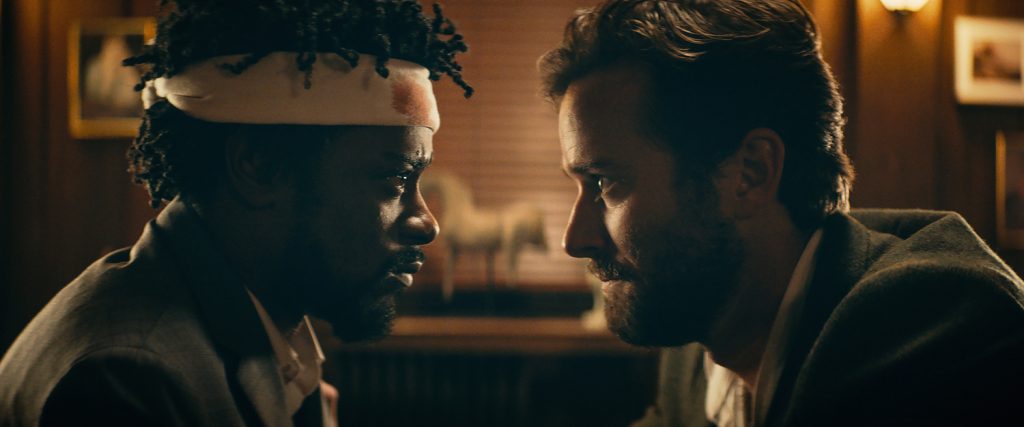
Also sprinkled throughout the film is television coverage of WorryFree, evolving from unsettlingly calm commercials that tempt Cash during the film’s opening, to news reports that show the increasingly large Squeeze-led demonstrations (Cash’s picket-line-crossing head injury most principally) and eventual pandemonium that ensues once the mutant horsemen are revealed and ultimately unleashed. Add in the uber-wealthy Steve Lift’s (Armie Hammer) “high-budget,” epitome-of-cheese equisapien infomercial (more like sick-mercial), and this film’s Langian trope of television becomes even further embedded. All these intermittent, stationary shots of the TV symbolize the overall mood of the film and nearby society, at each instance. They are snapshots in time, as well as a nested cinematographic simultaneity – we are witnessing movies (or so a proud Steve Lift calls his) within an actual movie, both running concurrently, each’s themes inextricably reflected in the other.
This is also similar to how the occasional close shots of Cash’s presumable father serve as expressionistic literalizations of what Cash feels at present: fist high in the air with defiance, just as Cash, at first hesitantly, but then defiantly, rises from this cubicle in solidarity with his fellow coworkers, or head-in-hand, frustrated, as Cash lies in bed arguing with Detroit about his recently having sold-out to one-eyed Mr. ______ and WorryFree in his power-calling suite. Each of these symbolic shots falls just moments before a significant narrative pivot, prescient of the changes that are about to happen before we even see them fully play out on screen. The use of these analogues in the mise-en-scène greatly helps to further the film’s figurative nature and metanarrative intrigue.
Soon, the parody begins to grow grander in scale, hard-hitting even closer to home. A profiteering media’s sensationalization and corporate commodification of the slapstick “Have a Cola and Smile Bitch” campaign – also communicated through the TV trope – is the clearest distillation of our modern-day internet meme culture, where nothing is worse, or more humiliating, than becoming a laughingstock. Like something out of Black Mirror’s “The Waldo Moment,” this meme just proves that you can disarm anyone with parody – much as this entire film does to capitalism – by burying them with incredulous cackles and indelible infamy. It is a brave, brave new world indeed.
With regards to the more formal elements of Sorry to Bother You, this segment of the film intentionally reeks of tackiness. Cash’s bloody head bandage stares at us like some hastily-glued craft art, just as the popular primetime game show he appears on (called “I Got the Shit Kicked Out of Me”) to spread what is meant to be damning evidence of WorryFree’s equisapiens feels like a hysterical relic of the ‘70s. Cash’s campaign to out the sleazy corporation only half-works, though. It shocks people, alright, but not in a bad way. WorryFree’s stock rallies, and lawmakers – along with a decent plurality of the public – support the company more than ever before, as Lift seeks to profit off of the press. As the saying goes, any press is good press in a capitalist economy.
The last formal technique I will examine is the Kafkaesque nature of Sorry to Bother You, evident in both its narrative and mise-en-scène. For example, all the cars appear to be dusty and old – from the 90’s at least – with only a handful of new ones visible throughout the entirety of the film. As with the rolodex earlier, and the (initially) box TV in Cash’s garage, many elements of the mise-en-scène in this film are timeless, hard to date and seemingly anachronistic. These many artifacts from decades past – even Cash’s uncle/landlord, played by Terry Crews, nearly looks like Mr. T’s doppelganger – are set in stark contrast with the modern new high-speed rail that hums along, elevated off the ground, car after blurred car monotonously speeding along, snobbishly bypassing the ills of an Oakland that is truly just as poverty-stricken in real life as it’s being portrayed on-screen. There are minor hints of Kafka in the imagery – an absurd, onerous amount of the same – and the prevailing sense of class stratification/warfare that becomes such an integral part of the film as it progresses. Furthermore, everything is a labor in this film – rather fittingly so – from the obvious fists-raised-in-solidarity organized labor of the nightmarish call center, to the inhumane long-hours, work-to-death (yet somehow, “play hard,” as well) mentality of Cash’s power-calling gig, and, especially, Diana’s absurdly, comically long elevator password. These are all Kafkaesque, perhaps not too overtly so, but certainly enough to be traceable upon any basic analysis, and they almost all use comedy as a vector to land their individual punches.
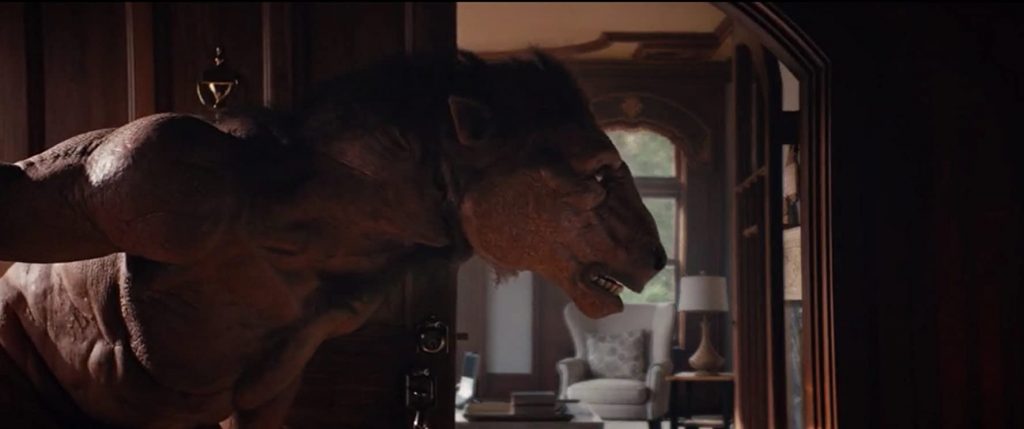
However, we reach a climactic point in the film where these mere thematic and visual hints of Kafka are no more; it is simply so blatantly, so hyperbolically, alike something out of The Metamorphosis that we can’t help but admire Riley’s homage to the Bohemian novelist. Sure, we have the laboriously perpetual cubicle city in the call center, we have the towering exterior shots of RegalView’s bureaucratic-looking office building, but the truest, most intertextually Kafka-esque scenes precipitate from Lift’s party, in which Cash discovers the equestrian mutants lined up in bathroom stalls. (Note, too, the minuscule, symbolic narrative/metanarrative tchotchke that is Steve Lift’s name: ostentatiously lifted/elevated above the rest of society in wealth and status.) Just as WorryFree was already subjecting thousands of people to oppressive indentured servitude, their leader, Steve Lift, had also been drumming up plans to turn those thousands (or millions, as he says) of people into literal workhorses – so-called equisapiens, as referenced earlier – populating a parallel reality all to their own, dubbed the “future of labor.”
Yes, that sure seems about accurate. While upon first glance these scenes may seem more like plotlines from an Orwell or perhaps Huxley novel, as soon as we think about it just enough, we realize this ludicrous satire is an actual, recurring reality all around the world: in addition to the United States, one can look to China, Saudi Arabia, among others. A society of “workhorses” can be credited to a system of unchecked corporate capitalism. Never before have human rights abuses been cinematically packaged so comically!
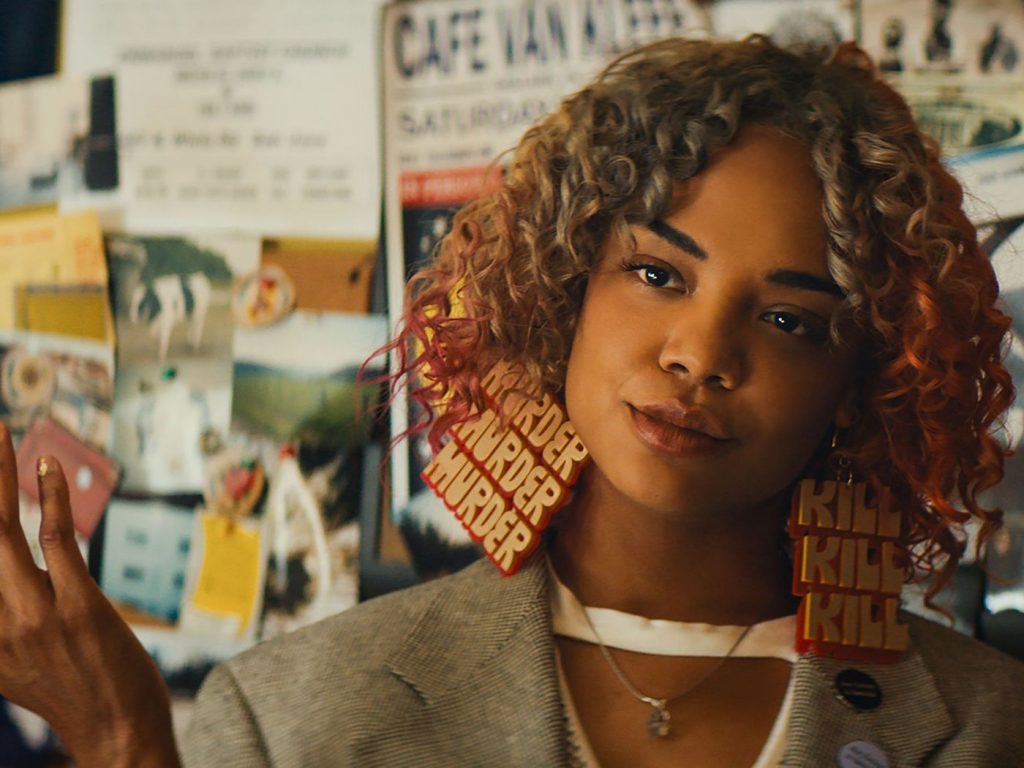
Sorry to Bother You comes together to produce one of the messiest, albeit most effective, social commentary films of the decade, replete with cinematographic muscle-flexing and witty screenwriting. Much like the call center at the onset, the film as a whole is quite simply just a glorious, delirious, surrealist mess, morphing from gutsy political satire into a visceral beast that feels more like a cliché sci-fi flick than the film we’d been watching for 140 minutes prior. Seldom before has a film so effectively satirized the greed of our world’s corporate elite and their many apologists; Sorry to Bother You accomplishes this with a meandering narrative plot, but a bulletproof metanarrative equivalency.
Expressed with a sense of cinematic urgency, the film relays the struggles of a unionized labor force that vows to not go gently into the good night, that vows to keep on fighting an apparently quixotic crusade against WorryFree and the corporate exploitation it represents amongst societal capitalism at large. The final picketers/equisapiens—WorryFree/SWAT team battle is a worthy coda to this campaign of formal elements and wily metanarrative. But perhaps a pair of Armie Hammer’s post-equisapien-revelation lines sum up the film best: “this isn’t irrational, right?” / “I’m not evil, okay!”: the economic equivalents of “I’m not racist, I have a black friend!” or “I’m the humblest person ever!” So goes the supposedly hypocritical, but definitely oxymoronic, tone and tenor of capitalism in our America and Riley’s America alike. The formal, narrative, and thematic facets of this film do each other tremendous justice in swinging for cinematic fences, and pushing the bounds of modern-day satire. Put shortly, Sorry to Bother You is an exercise in how to pack as much “wokeness” into one film at one time, and Riley, in his directorial debut, passes this test with chaotic, albeit flying, colors.
Now, on to the things that actually matter: where can I get one of those “Have a Cola and Smile Bitch” wigs?